Somewhere over the train flow
Kuopio (FI) – Mentionné
DONNÉES DE L'ÉQUIPE
Représentant d'équipe : Joaquín Millán Villamuelas (ES) – architecte
Collaborateurs : Cristina Vicario del Cojo (ES) – architecte ; Maria Soledad Antón Vicente (ES), Sergio González Gómez (ES), Patricia Moreno Blasco (ES), Juan Naranjo García (ES), Lorena Villoria Casado (ES) – étudiants en architecture
OOIIO Architecture, c/ Galileo 91, 2°2., 28003 Madrid – España
+34 91 282 6219 – info@ooiio.com – www.ooiio.com
Voir la liste complète des portraits ici
Voir la page du site ici

J. Millán Villamuelas, M. S. Antón Vicente, S. González Gómez, P. Moreno Blasco, J. Naranjo García, C. Vicario del Cojo and L. Villoria Casado
INTERVIEW (en anglais)
1. How did you form the team for the competition?
The team was already formed: we are a young emerging office working for 5 years already and when we decided to go for Europan we were working on some other projects in Latin America, some of the team members were doing their internship in our office and are now back to University, and others were still working with us as architects.
2. How do you define the main issue of your project, insisting on how you answered on this session main topic: adaptability and urban rhythms?
The main project idea (generating a pedestrian bridge-street with high housing density on both sides) comes as an answer to the main site problem – the railway as a barrier to the city´s connectivity. Our proposal can be adaptable to other Kuopio locations as we suggested on our panels, building bridge constructions to link all the isolated city areas.
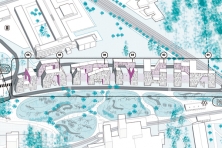
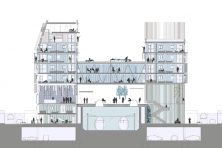
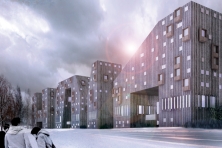
3. How did this issue and the questions raised by the site mutation meet?
Rethinking the problem as the solution – if the railway is a barrier for the city, we now consider the railway as the main attraction point for the competition area, so the otherwise isolated areas get linked thanks to the new construction.
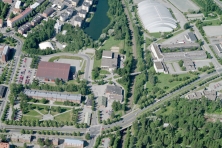
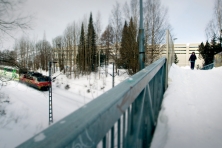
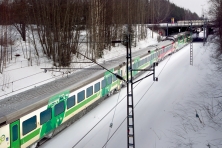
4. Have you already treated this issue previously and could you present some reference projects that inspired yours?
Actually no, we have not treated this problem before within the office. We have designed a bridge in Lima, Peru, but not a bridge-street with this high level of complexity. We are very happy to be able to open a new investigation line in our office with this competition. We like to go for competitions exactly for this: open new design ways and try to get new solutions. We are not worried about getting the prize or not, we know it is complicated; we are always focused on getting a good and special solution.
As far as references are concerned, of course we always do a deep research of what other good architects did in the past; for this project we specifically studied the works of Steven Holl, Rem Koolhaas and Enric Miralles.
5. Today –within the era of an economic crisis and sustainability– the urban-architectural project should reconsider its production method in time; how did you integrate this issue in your project?
As a young architectural office based in Madrid, we are suffering quite a lot of the crisis and it is changing our way of doing architecture. Our proposal looks expensive at a first glance, but if you make numbers it can be quite profitable economically speaking and on a sustainable way: we are betting for density, density is actually very sustainable, we are getting free space for the city, a new park, instead of building the whole proposed plot, which is also providing more economical value to our buildings.
The special buildings shape all together and could become a great impulse for Kuopio and the proposed commercial street will attract visitors from the whole Finland, with great benefits for the inhabitants.
6. Is it the first time you have been awarded a prize at Europan? How could this help you in your professional career?
Yes, it is the first Europan Prize that we have got. We are really really happy about it! Unfortunately the site is not going to implement any project at the moment, not even the winning proposal, so we think this Prize will definitely help us thanks to all the publications, exhibitions and media attention that Europan generates.